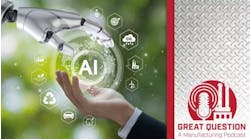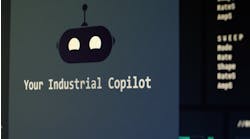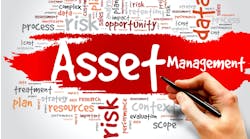By Mike Bacidore, chief editor of Control Design
The first 100 years are always the hardest. Few companies last that long. So, when you do, your footing becomes pretty sure, especially when your global footprint spans 50 countries and you’re more than 57,000 employees strong. Parker Hannifin has earned its centennial stripes with a wide-ranging portfolio of industrial motion and control equipment and components.
Why in the world would it want to change?
“For the past two or three years, we’ve been going through a digital transformation,” explained Jeff Smith, Parker Hannifin’s IoT business development manager, who spoke at Smart Industry 2017. Parker Hannifin’s centralized IIoT strategy platform, Voice of the Machine, is designed to take its products and connect them, and Smith’s role is to connect the company’s 142 divisions in a similar fashion. “These divisions are building products and have existing distribution,” he explained. “I’m spending most of my time helping them to find the value and build the offer.”
In the course of building that offer, Smith looks for the stranded value in Parker’s existing portfolio. “We’ve been selling these products for a long time,” he explained. “There’s some stranded value that we’re looking to unlock. For example, 43% of downtime is unplanned due to equipment failure, and 5% of capacity or productivity is lost to unplanned downtime. What is the value of being able to use that equipment? If a piece of equipment runs to failure, it can cost 50% more to fix the asset.”
Parker has developed figurative buckets of value, which include helping a customer to make money, helping a customer to save money and keeping a customer out of jail by complying with regulations and legislation.
What’s old is new
Parker’s transformation requires moving from sustaining innovation, which would include the next iteration of existing equipment, to adjacent innovation, which might include a new technology that makes the equipment more efficient. Finally, the move to disruptive innovation is the Holy Grail. That’s where the equipment itself changes to meet the customer’s need more efficiently—say, on-demand equipment or an app-based service.
“We’re accumulating a lot of tribal knowledge,” explained Smith. “I have to get people from sustaining and adjacent to disruptive. We’re starting with a blank sheet of paper. We have a platform, and we have data scientists. It could take three to five years.”
With the Voice of the Machine platform, Parker can:
- Reduce customer spend—through less energy, longer asset life, mitigated regulatory penalties;
- Increase customer efficiency—through lower labor requirements, improved workflows and processes;
- Increase customer output—through reduced downtime, improved quality, optimal capacity; and,
- Increase OEM revenues—through increased aftermarket dollars, improved pricing and margins.
“The journey we’re going through includes some headwinds we have to deal with,” explained Smith. “We have a lot of existing product—let’s say it’s a hydraulic pump—and I’m doing things that are iterating off of that existing pump technology. There’s so much built around a company that’s making products and services that are tied to a sustaining trajectory.”
Customer engagement
One of the first steps in changing the offer in today’s business environment is figuring out not only what customers need and how to make money from it, but in revisiting who the customer actually is.
“I was in Gothenburg, Sweden, at an auto manufacturer,” recalled Smith, who noticed, after leaving the plant, that the decision makers for these new technologies were not the same people the account rep had been dealing with for years. There was a whole new team involved. “The people we are working with and selling to are going through this same new process. We have to figure out who we’re talking to in that organization. Quite commonly, they’re new people the sales reps have to make relationships with.”
This means forging new roads and building new bridges, but it also reveals new opportunities. “The model is changing,” said Smith. “Is it going through an OEM? Through a distribution network? Are we offering any adoption services or reports that go with the core offering? What is of value and what’s not? When we look to build a core offering, which is going to be the first thing a customer will consume? We’re looking to build a new model that makes a difference in the customers we all touch.”
Because Parker is the market leader in many spaces, that offers pricing power and the ability to introduce new solutions that are affordable to customers and profitable to Parker. “It may start out as a customized offer,” explained Smith. “But, ultimately, you want a standardized offer, and the market will accept premium pricing. Now, we are providing a platform as a service, but over time gravity tends to drop the price. We have to look at the life of the application value chain.”
That involves looking at the risk of changing from technology as an asset (TaaS) to technology as a service (TaaS). “For 100 years, Parker has been really good at making, selling and shipping,” said Smith. “Now, there’s also land, implement, adopt, operate, optimize, expand and renew. With a platform or product as a service, what’s the lifetime value of the customer?”


